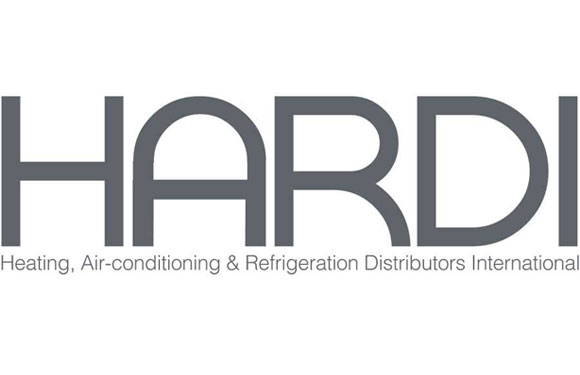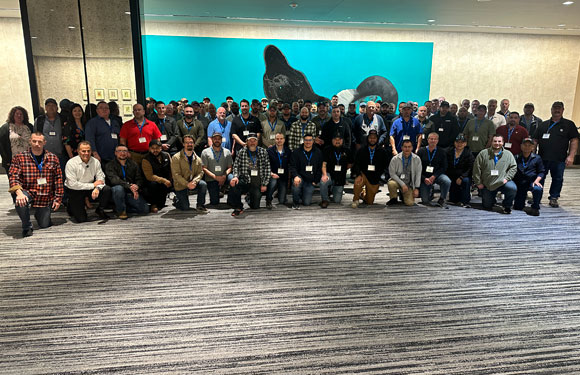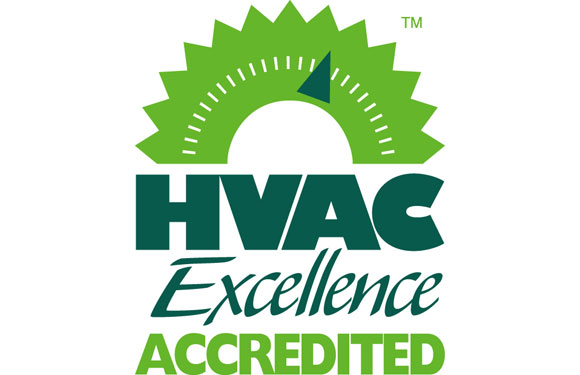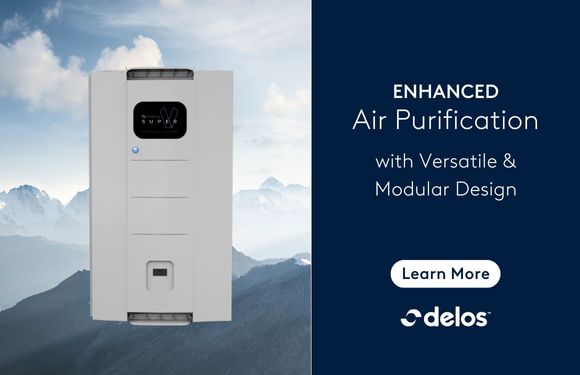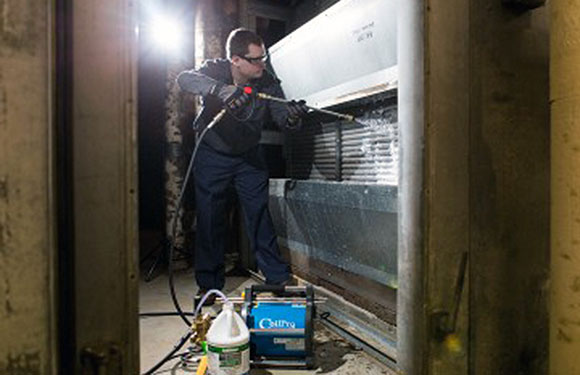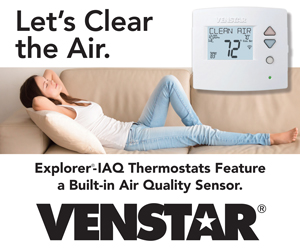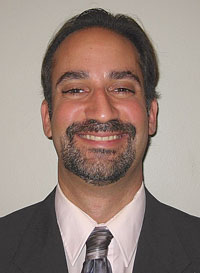
News
Discussing COVID-19 ASHRAE Recommendations for HVAC Systems
By Scott M. Katzer, P.E., CFEI
ASHRAE has developed proactive guidance to help address coronavirus disease (COVID-19) with respect to the operation and maintenance of heating, ventilating and air-conditioning (HVAC) systems1 and has established an epidemic task force to respond to the global COVID-19 pandemic2. ASHRAE released a position document (PD) titled “ASHRAE Position Document on Airborne Infectious Diseases.”3 This document primarily discusses airborne infectious diseases in healthcare facilities and “does not provide specific requirements for infectious disease control in schools, prisons, shelters, transportation, and other public facilities other than the general ventilation and air quality requirements of Standards 62.1 and 62.2. However, the guidance in this PD does apply to these facilities.”4
A summary of the PD recommendations were as follows5:
- ASHRAE recommends the following strategies of interest to address disease transmission: dilution ventilation, laminar and other in-room flow regimes, differential room pressurization, personalized ventilation, source capture ventilation, filtration and UVGI.
- All facility designs should follow the latest practice standards, including but not limited to ASHRAE Standard 55 for thermal conditions; ventilation Standards 62.1 and 62.2, and 170.
- Commissioning, maintenance, and proper operation of buildings, and, in particular, systems intended to control airborne infectious disease, are necessary for buildings and systems to be effective.
- Building designers, owners, and operators should give high priority to enhancing well designed, installed, commissioned, and maintained HVAC systems with supplemental filtration, UVGI, and, in some cases, to additional or more effective ventilation to the breathing zone. Filtration and UVGI can be applied in new buildings at moderate additional cost and can be applied quickly in existing building systems to decrease the severity of acute disease outbreaks. Indoor Air Quality Guide contains information about the benefits of and techniques for accomplishing these enhancements.
As of April 15, 2020, the following statement from the ASHRAE Epidemic Task Force was posted on their website6:
On the recommendation of the ASHRAE Epidemic Task Force, ASHRAE leadership has approved the following two statements regarding transmission of SARS-CoV-2 and the operation of HVAC systems during the COVID-19 pandemic:
- Transmission of SARS-CoV-2 through the air is sufficiently likely that airborne exposure to the virus should be controlled. Changes to building operations, including the operation of heating, ventilating, and air-conditioning systems, can reduce airborne exposures.
- Ventilation and filtration provided by heating, ventilating, and air-conditioning systems can reduce the airborne concentration of SARS-CoV-2 and thus the risk of transmission through the air. Unconditioned spaces can cause thermal stress to people that may be directly life threatening and that may also lower resistance to infection. In general, disabling of heating, ventilating, and air-conditioning systems is not a recommended measure to reduce the transmission of the virus.
A March 24, 2020 ASHRAE Journal article by Lawrence J. Schoen, P.E. states the following with regards to HVAC systems7:
A few actions related to HVAC systems are suggested, in case some spread of the virus can be affected:
- Increase outdoor air ventilation (use caution in highly polluted areas); with a lower population in the building, this increases the effective dilution ventilation per person.
- Disable demand-controlled ventilation (DCV).
- Further open minimum outdoor air dampers, as high as 100%, thus eliminating recirculation (in the mild weather season, this need not affect thermal comfort or humidity, but clearly becomes more difficult in extreme weather).
- Improve central air filtration to the MERV-13 or the highest compatible with the filter rack, and seal edges of the filter to limit bypass.
- Keep systems running longer hours, if possible 24/7, to enhance the two actions above.
- Consider portable room air cleaners with HEPA filters.
- Consider UVGI (ultraviolet germicidal irradiation), protecting occupants from radiation, particularly in high-risk spaces such as waiting rooms, prisons and shelters.
Many of ASHRAE’s PD recommendations are essentially following their previously established standards and states that HVAC systems can affect disease transmission by “diluting the air in a space with cleaner air from outdoors and/or by filtering the air.”8 However, simply doing so may have unintended adverse effects.
Increasing Outdoor Air Ventilation
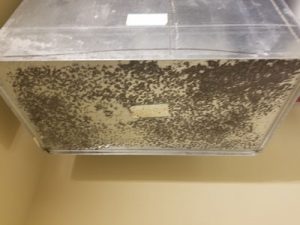
excess moisture settling on bottom of duct.
Moisture infiltrates into a building due to vapor pressure diffusion9, even if an HVAC system is off. Proper building pressurization can help control this moisture infiltration. However, increasing outdoor air ventilation increases mixed air temperatures being delivered to the cooling coil. This increases the AHU supply air temperature along with excess moisture the coil was unable to remove which can lead to condensation issues resulting in microbial growth if not corrected. It is imperative to verify insulation around ductwork, air devices, etc. and building envelope and attic space insulation is properly installed.
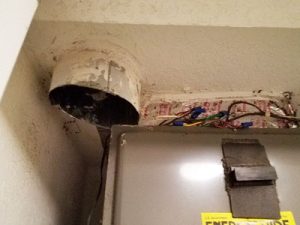
AHU plenum closet with no volume control.
For plenum systems10, providing a fully ducted system should be considered to avoid the potential for the spread of airborne particles. However, cost effective solutions due to existing building configurations may be difficult. Non-conditioned outdoor air directly into a plenum space should be avoided.
Increasing Filtration
Higher filter efficiencies are an effective way in filtering out airborne particles, however, filters with higher MERV11 ratings have smaller openings capturing more airborne particles but restricting airflow. Increasing filter efficiency means increased static pressure12 corresponding to a decrease in velocity and total airflow.

In addition, coils can freeze if the velocity across cooling coils is too low. Therefore, the system must have a way to make-up the difference of the increased static pressure. In some systems, this can be achieved by increasing the fan speed or horsepower (hp). However, for smaller residential/light commercial AHU systems, capabilities are limited. Static pressure also increases as filters become dirty, meaning a high efficiency filter may work fine while clean but may not when the filter gets dirty.Evaluate systems by a licensed professionals before any changes are made to verify existing performance and if any excess system capacity exists.
Employ protocols for removing and disposing of used filters including wearing appropriate personal protective equipment (PPE); protecting areas to collect falling particles during filter extraction; cleaning/sanitizing surfaces before installing new filters; and properly bagging/disposing of used filter media.
Other Considerations
Running HVAC systems longer, as noted per Mr. Schoen’s article, would theoretically provide continuous ventilation but increased energy usage and the potential for overcooling the space may negate the positive effects. Implementing additional controls may assist with maintaining a proper indoor environment; however, should be done without jeopardizing the building and occupants.
The PD discusses several UVGI strategies; however, the PD states that “no controlled intervention studies showing the clinical efficacy of all of the above strategies have been conducted, including dilution ventilation and pressure differential that are required under current practice standards and guidelines.”13
All recommendations should be evaluated before implementation to determine if any will negatively affect the building or HVAC system performance.

About the Author
Mr. Katzer is a Senior Forensic Engineer and Florida Division Manager with The VERTEX Companies, Inc. He earned a Bachelor of Science in Mechanical Engineering from Northeastern University and is a licensed professional mechanical engineer in 12 states. He is an experienced mechanical engineer in the evaluation and design of healthcare, institutional, commercial, residential and industrial technically complex projects, involving HVAC, electrical, plumbing, fire protection, building envelope and indoor air quality issues.
1 https://www.ashrae.org/technical-resources/resources
2 https://www.ashrae.org/about/news/2020/ashrae-epidemic-task-force-established
3 This PD was originally approved by the ASHRAE Board of Directors on January 19, 2014 and Reaffirmed by the Technology Council on February 5, 2020. This PD expires on August 5, 2020.
4 ASHRAE Position Document on Airborne Infectious Diseases, Section 3.1
5 ASHRAE Position Document on Airborne Infectious Diseases, Sections 3.2 and 4
6 https://www.ashrae.org/news/ashraejournal/guidance-for-building-operations-during-the-covid-19-pandemic
7 ASHRAE Position Document on Airborne Infectious Diseases, Section 3.1
8 Vapor pressure is essentially the portion of atmospheric air pressure attributable to water vapor. Warmer air with higher vapor pressures tends to move toward areas of cooler air which has lower vapor pressures. This process is called “diffusion.”
9 A plenum system is a space utilized for air circulation for HVAC systems. Typically plenum spaces are located above ceiling spaces, below floors or within mechanical rooms and used as airflow mixing chambers.
10 Minimum Efficiency Reporting Value (MERV) is a rating (on a scale from 1 to 20) developed by ASHRAE on the filter’s efficiency to trap airborne particles. Clean room HEPA and ULPA filters are rated at between MERV 17 and 20.
11 Static pressure is essentially air resistance within a fan or duct system which grows proportionally to airflow. The amount of static pressure in a system can be affected by a number of factors including friction losses due to filters, ductwork configuration, etc.
12 ASHRAE Position Document on Airborne Infectious Diseases, Section 3.2




